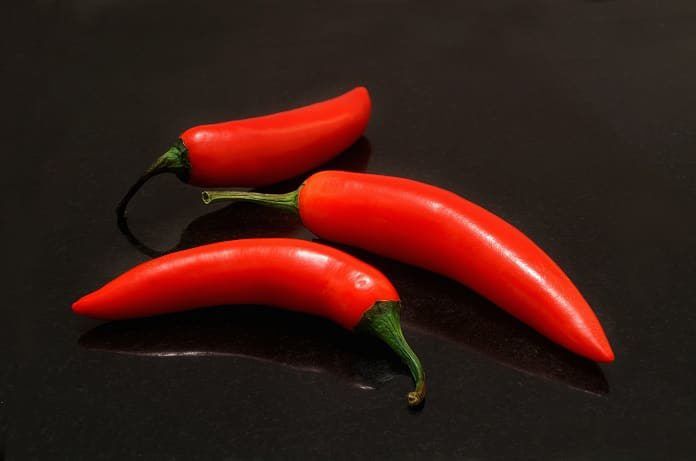Researchers found that both the frequency and the amount of spicy food intake were inversely associated with the LDL-cholesterol to HDL-cholesterol ratio. These results suggest that spicy food consumption could be a plausible means of cardiovascular disease risk reduction.
Cardiovascular disease (CVD) is the leading cause of mortality worldwide. Dyslipidaemia, having abnormal amounts of lipids in the blood, is considered one of the major risk factors in the development of CVD, generally presenting as elevated levels of LDL-cholesterol and triacylglycerols (TAGs), as well as low HDL-cholesterol. In Asian countries, such as China, the main types of dyslipidaemia typically manifest as the latter two. Along with China’s recent socioeconomic development has come lifestyle changes that have brought about a nation-wide increase in dyslipidaemia prevalence over the past decade. If left unaddressed, this may be paralleled by a similar increase in CVD prevalence, with the potential to immensely burden their healthcare system in the near future.
Previous studies have shown that certain foods and their bioactive ingredients are able to help improve some individuals’ dyslipidaemia status. An example of such a food is the capsicum species, commonly used worldwide as natural food colourants, spices, and even in traditional medicines. In China, chillies—of the capsicum family—are one of the popular ingredients used to prepare spicy foods. Capsaicinoids have been shown in prior studies to increase energy expenditure, reduce fatty tissue, and enhance lipid metabolism. The lipid-reducing effect of capsicum species and their bioactive ingredients has been reported in the past in various animal experiments or small-sized population studies. A recent study published in the British Journal of Nutrition investigated potential associations between spicy food consumption and serum lipids. The aim of this current study was to extend these results to a more geographically diverse and larger-scale population, investigating associations between spicy food consumption and serum lipids in Chinese adults.
Data were obtained from the 2009 phase of the China Health and Nutrition Survey. The sample size consisted of 6774 ostensibly healthy Chinese adults, ranging from ages 18 to 65 years. The frequency of consumption and the intensity of spicy foods were self-reported; furthermore, regular spicy food consumption was evaluated using three consecutive 24-h recalls. Fasted blood samples were taken from participants, from which total cholesterol, TAG, LDL-cholesterol, and HDL-cholesterol levels were determined. Finally, various statistic analyses were performed to estimate associations between spicy food consumption and serum lipid profiles.
The results showed that the frequency and average amount of spicy food consumption were inversely associated with LDL-cholesterol; in other words, the more often and larger the amounts of spicy food consumed, the lower the amount of “bad” cholesterol. Researchers also observed that the frequency and average amount of spicy food intake were inversely associated with LDL-cholesterol:HDL-cholesterol ratio, which is—perhaps—a better means of assessing a person’s lipid profile. This result, in particular, supports the notion that consumption of spicy foods may be an alternative choice to reduce the risk of CVD. The researchers’ reason that the dyslipidaemia-lowering results may be attributed to capsaicinoids or a combined effect with other phytochemicals present in chillies.
However, it should be noted that their results also demonstrated a positive association between spicy food consumption and serum levels of TAG, the form in which fat energy is stored in the body; the researchers hypothesize that this may be due to the excess energy and oil that often accompanies spicy foods. So, in order to reap the full benefits of spicy food, turn up the heat with some chillies—but be conscious of the oil and overall calories that you’re also ingesting.
Written by Rebecca Yu
Source: Xue, Y., He, T., Yu, K., Zhao, A., Zheng, W., Zhang, Y., & Zhu, B. (2017). Association between spicy food consumption and lipid profiles in adults: a nationwide population-based study. British Journal of Nutrition, 1-10.


